8. The Aviator
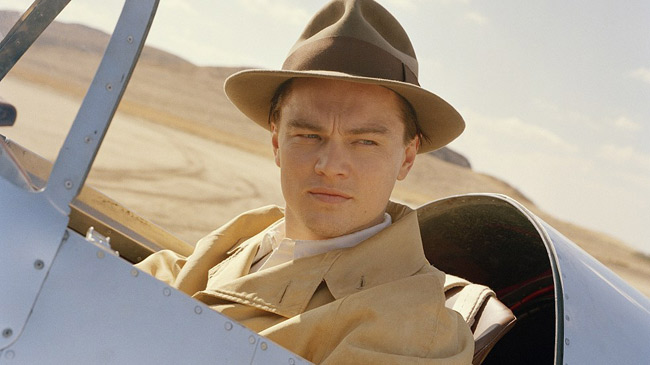
Utilizing every technique necessary to convey the reality of a life lived – in this case that of Howard Hughes – The Aviator may be the most ambitious film of Scorsese’s career in the 21st century.
Visual highlights include the ways in which the camera reflects the cracks in Hughes psyche as his obsessive-compulsive disorder worsens with age. The slow motion and quick cuts of blinding camera bulbs in his moments of public fame and the stark symmetry of the memorable bathroom scenes that showcase his fear of germs stick hardest in the mind. Scorsese even manipulated the film’s colors to reflect that of early bipack color films. And every moment of motion is arresting.
At three hours in length, The Aviator feels like it could go on another hour or so, as Scorsese’s sweeping biographical drama seems to only convey a fraction of what fascinates him about the adventurous filmmaker and aviator. Robert Richardson’s second win of the century in collaboration with Scorsese works both as a simulacrum of history and a captivating film all its own.
7. Inception
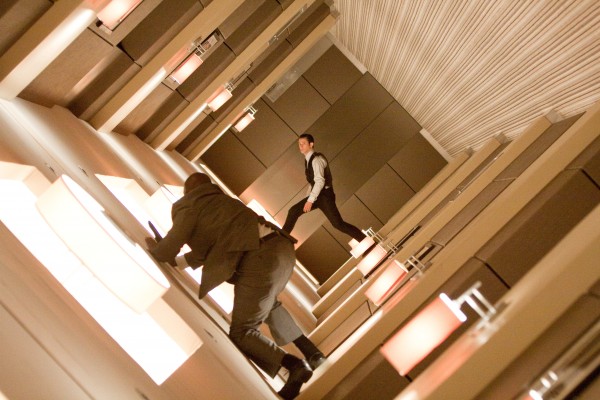
Though as years have passed my admiration of Inception has waned due to how little of the script actually aims at the surreal – or at least the generally dreamlike – I can’t say that Wally Pfister’s skilled hand, this time primarily in digital photography, doesn’t make Nolan’s mind-bending actioner all the more brilliant. Just those remarkable takes of Joseph Gordon Levitt navigating a brawl in a spinning hallway and hotel room would be enough to hand Pfister a trophy.
With sublime compositions of color – with steely blues and greys offset by deep, warm tones – Pfister makes the most of Nolan’s complex vision while making it a fairly easy visual experience to navigate. Also, the manipulation of time, as Nolan’s script would have it, makes for moments of extreme slow motion and faster speeds that serve Inception well in function and on camera. Their collective labors culminate in the finest fruits that the Nolan-Pfister pairing has reaped visually.
6. Hugo
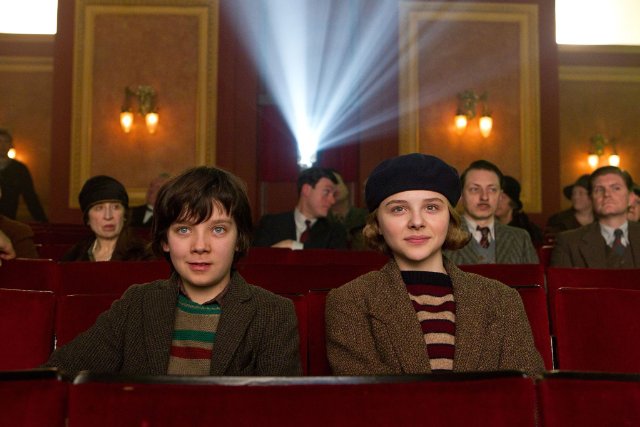
If you’re going to film a love letter to early cinema, you better be doing something interesting with your camera. But when the cinematographer is Robert Richardson, with Martin Scorsese is at the helm, chances are the results are going to be pretty stunning.
Hugo is a quaint story with a massive budget, and sadly audiences didn’t turn out for something so out of the famous directors’ familiar wheelhouse. But just in regards to it’s extraordinary opening shot – which in 3D or 2D makes James Cameron look like a bit of a hack – Hugo artistically bears what it longs so hard to both emulate and admire. Even in its smallest moments there is something to appreciate.
5. Pan’s Labyrinth
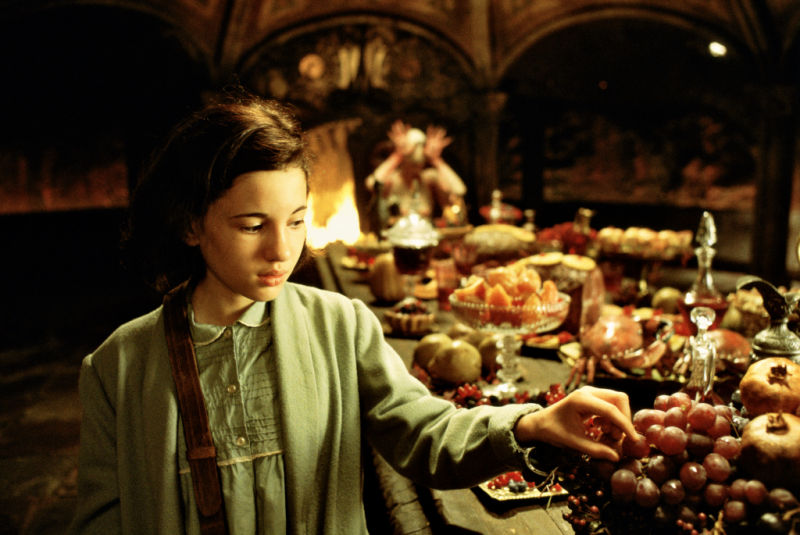
Guillermo Del Toro’s calling card, which intrinsically blends dark fantasy with grim wartime elements, is an indisputably passionate creation.
Lovely, heart-wrenching and original, Pan’s Labyrinth cinematography is at the forefront of this film’s properties to technically realize this bleak fairy tale. Like the best of Spielberg’s work with the legendary Janusz Kaminski, every emotional beat of this story is fulfilled by the motion and perspective of the camera. Del Toro’s view, along with cinematographer Guillermo Navarro, is constantly enamored with wonder.
I’m not quite sure how the Academy could pass over Lubezki’s flawless work in Alfonso Cuarón’s Children of Men – film photography that stands with the best of the current century – but if it was going to lose anything, it should have been Pan’s Labyrinth.
4. Road to Perdition
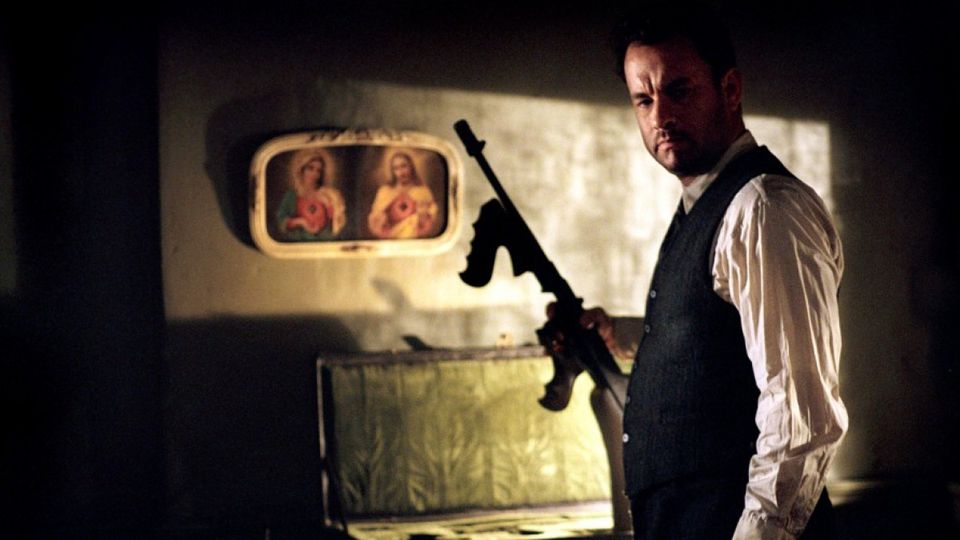
Like an update of the stylistic facets of film noir, Road to Perdition is a grand finale for the illustrious career of Conrad L. Hall, who earned his third Academy Award – and second with Sam Mendes along with American Beauty – after nearly fifty active years as a director of photography.
What he exhibits through the sheer balance of light and shadow is enough to commend Hall, but he somehow makes a dreary color film feel as if it was actually ripped from an age of black and white and revitalized for modern times. He emulates both the graphic novel from which the film is based and the atmospheric influences of painter Edward Hopper.
Stunning sequences like the rainy climax as Hanks’ Michael Sullivan finally kills his father figure in Paul Newman’s John Rooney is a substantial payoff of patience, extraordinary blocking and composition beforehand. And contemporary techniques like POV, like when Sullivan Jr. sees firsthand what his father does for a living, balances out everything seemingly old-fashioned about Road to Perdition.
3. The Lord of the Rings: The Fellowship of the Ring
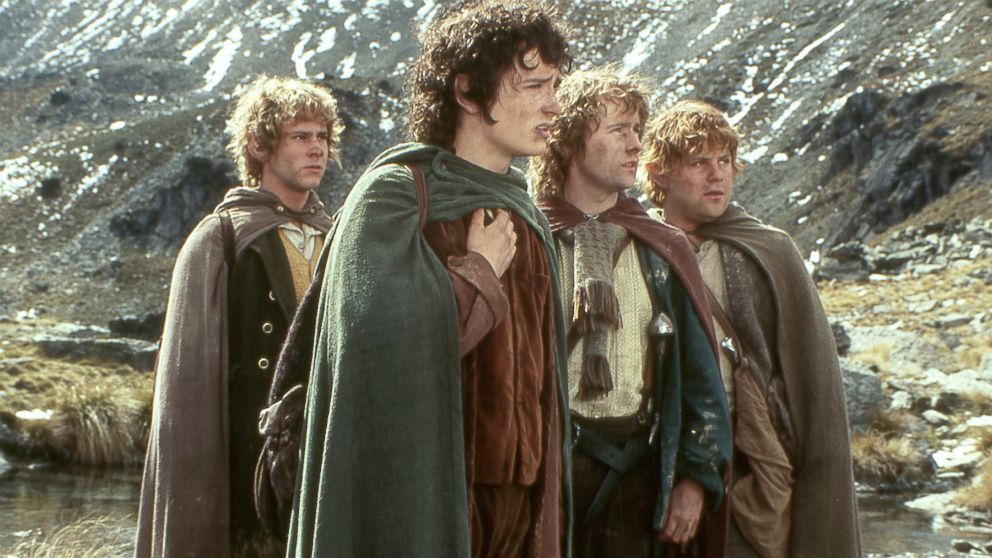
Though very much aided by years of pre-visualization, revolutionary visual effects, perfect casting and so much else that went right with Peter Jackson’s monumental Middle Earth undertaking, Andrew Lesnie’s own offerings in this and each Lord of the Rings installment is vivacious and unmistakably inspired. The Two Towers and The Return of the King were not even nominated for cinematography in following years, but throughout the trilogy Lesnie locates an updated expressionism for both the splendid and the sinister sides of Tolkien’s lore.
Actually reading the trilogy really makes you appreciate how Lesnie and Jackson managed to make something so seemingly bound to the page come alive in a cinematic sense. The use of miniatures, WETA’s digital magic and the intuitive use of New Zealand’s breathtaking locales all are in aid of wondrously creating the first leg of Frodo’s epic journey and beyond.
Fellowship itself does incredible tricks in forced perspective in order to deal with height difference in hobbits, among other savvy illusions used to make this high fantasy appear rightly so. The independent nature of this massive three-film shoot never results in cutting corners but instead in breaking the mold, with Fellowship often being considered the most impressive for using digital effects the least.
Lesnie is able create countless images as iconic as the elements of the story itself. He makes the impossible look so very real.
2. La La Land
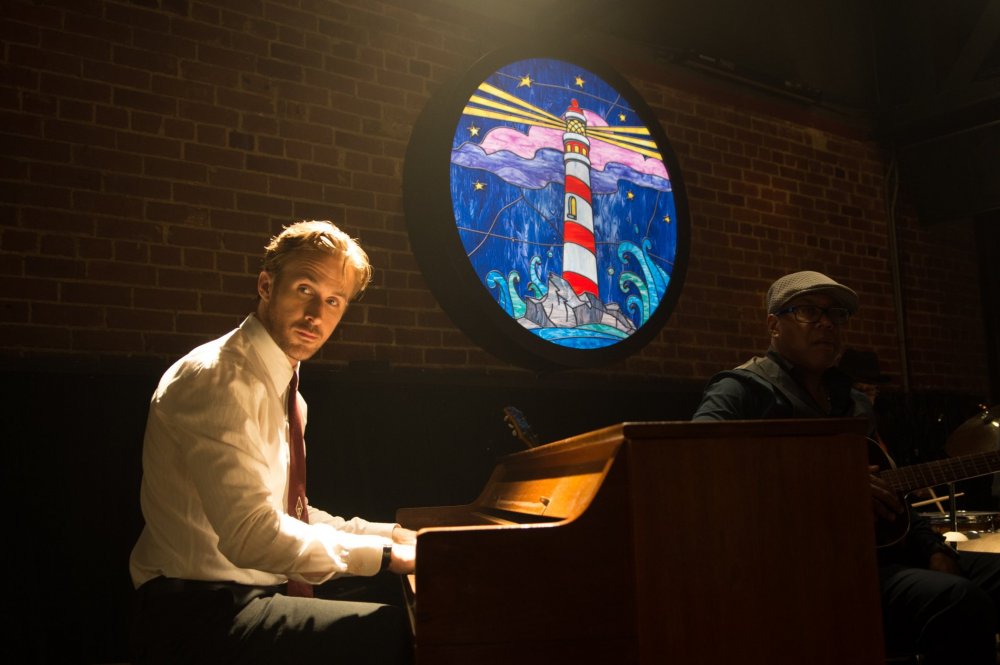
Even if you’re one of those soulless bastards who were somehow not emotionally affected by Damien Chazelle’s second feature, even the most cynical curmudgeon would have to admit that La La Land is spectacularly shot.
It is exuberant to watch fledgling auteur Damien Chazelle paint in such masterful strokes, spreading his wings as a director to the full realization of his inner vision in his modern musical undertaking. Chazelle’s master-class editing that made Whiplash such a suitably rhythmic visual experience is here replaced by the magic of inspiring, tirelessly rehearsed unbroken takes.
Despite the wild ambition of these astonishing oners in practice, Chazelle and cinematographer Linus Sandgren never draw attention to themselves the way that, say, Lubezki will present an accomplished long take. Whether it’s a pivotal number like A Lovely Night or the intimacy of Stone’s Audition, Chazelle is mathematical about the synchronicity of the technical and the emotional.
Utilizing whip-pans, dreamy lighting, and faultless stirs of motion, La La Land is somehow full of both ardent feeling and thrilling perfectionism, often simultaneously.
1. There Will Be Blood
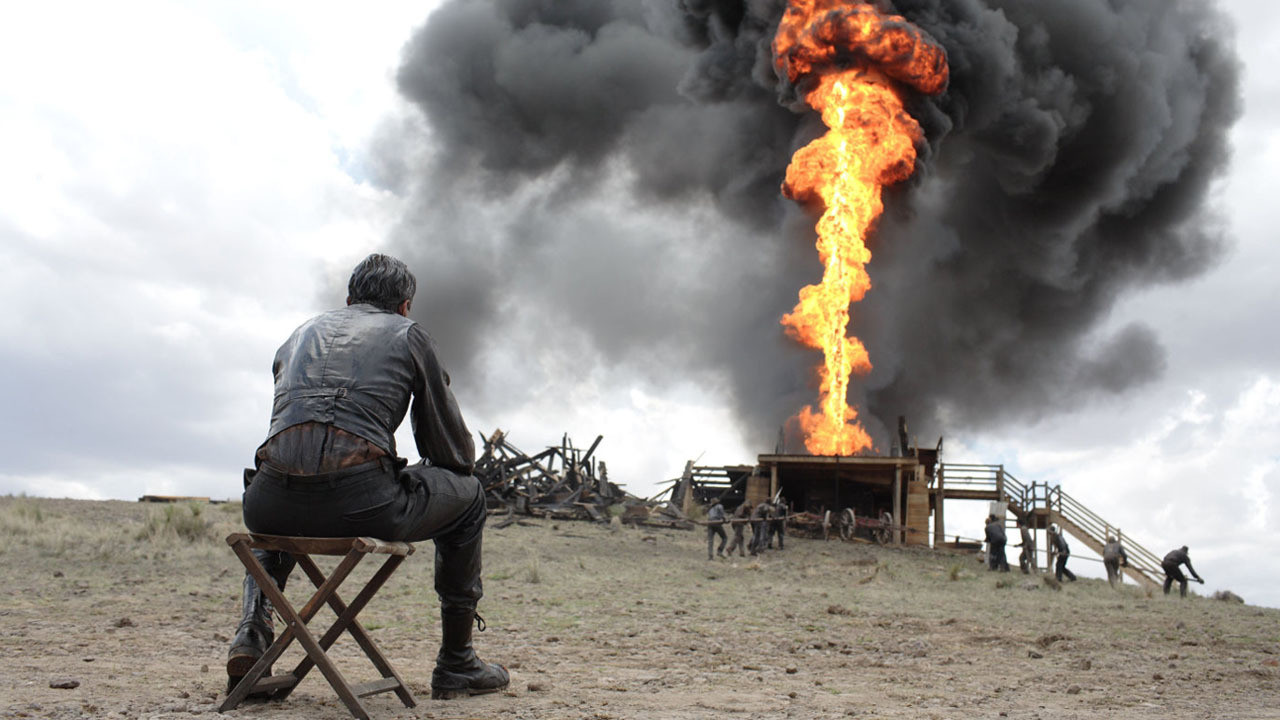
Between Deakins’ magnificent imprint on No Country For Old Men and The Assassination of Jesse James by the Coward Robert Ford, as well as Kaminski’s work in Diving Bell and the Butterfly, 2007 was a prestige year for the art of cinematography. The incredible work aside from Robert Elswit’s camerawork in There Will Be Blood is only a testament to how amazing a visual experience it really is.
Elswit has been Paul Thomas Anderson’s right hand man since Hard Eight, and his subtle, elegant compositions have only improved with each film he’s made in this partnership – their latest collaboration in Inherent Vice is like a tutorial in how to shoot interesting dialogue.
But in the case of There Will Be Blood, virtually any frame could be hung up on the wall and practically every take in the film is it’s own work of art. Something as simple as Plainview mapping his pipeline is an astonishing accomplishment of precision, gently basking the beauty of the Texas landscape while tapping into the twisted knot of relative morality at the center of Anderson’s themes and larger than life characters. Beyond the film’s famous ending, the number of remarkable scenes on a purely visual plane is abundant.
There Will Be Blood transcends its surface as an experimental period piece to the heights of mythic drama ripped from some dark, succulent nebulous – a feat in severe debt to Robert Elswit’s instinctive talent with the camera.
Author Bio: Ian Flanagan is an aspiring film critic from Pennsylvania, whose favorite films include Waking Life and Vivre Sa Vie. Follow him on twitter @newwavebiscuit and view his film reviews and past writing at filmbriefing.com.